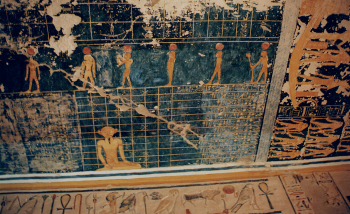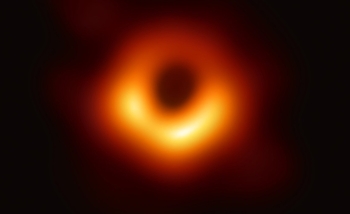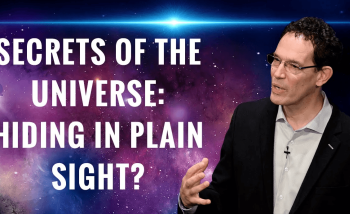Nearly a year after the claimed detection of gravitational waves caused ripples of excitement around the world, follow-up research has left those conclusions in the dust.
Last March, the research team behind the Antarctic BICEP2 (Background Imaging of Cosmic Extragalactic Polarization) telescope announced the discovery of tell-tale polarization in light from space that appeared to be consistent with gravitational waves.
Such waves are a key prediction of inflation – the idea that the infant universe underwent a period of ultra-rapid expansion immediately following the big bang, causing gravitational wave “ripples” that left an imprint on the earliest light in the universe, the cosmic microwave background (CMB).
Follow-up research released last week, however, indicates that cosmic dust, not echoes of the big bang, may well have caused the BICEP2 signal.
The BICEP2 claim hinged on the interpretation of a curlicue pattern in the polarization of the CMB as being due to ripples in spacetime, called gravitational waves, predicted to have been generated during inflation.
That finding appeared to be dramatic observational evidence in favour of the theory of inflation. However, as with all scientific discoveries, meticulous analysis and confirmation is required.
So when the apparent discovery made international headlines last March, some cosmologists, including Perimeter Institute Director Neil Turok, urged caution about attributing the pattern to gravitational waves.
Now, it appears such caution was warranted: a follow-up analysis done jointly by BICEP2 and Planck satellite researchers indicates that the earlier BICEP2 findings may well be attributable to dust scattered throughout our Milky Way galaxy. Microscopic grains of dust, spinning in the galaxy’s magnetic field, now seem to be the explanation for the curly pattern in the radiation seen by BICEP2.
The BICEP2 team initially interpreted their measurements as implying that around 20 percent of the ripples measured in the CMB were due to inflationary gravitational waves. This claim was, however, in tension with the Planck satellite’s previous measurements, as pointed out in a paper by Perimeter Faculty members Kendrick Smith, Latham Boyle, Turok, and their co-authors.
Just weeks after last March’s BICEP2 announcement, Perimeter Institute hosted the world’s first international conference to discuss and debate the results, “Implications of BICEP2,” at which scientists discussed possible explanations for the findings, including cosmic dust contamination.
“Science is a self-correcting process,” said Turok. “An incorrect claim was rather quickly corrected. But what is at stake is something more significant. The most popular theory of the early universe is now being strongly challenged by experiment. It will be exciting to see whether the theory survives or whether it will of necessity have to be replaced by another theory. We are lucky to live in an era when questions about the very beginnings of the universe have become a part of normal science.”
– Colin Hunter
FURTHER EXPLORATION
- “A Joint Analysis of BICEP2/Keck Array and Planck Data” (arXiv)
- “BICEP2 and Planck Joint Study: Gravitational Waves Remain Elusive” (National Science Foundation Press Release)
- “Scientists Overturn Widely Publicized Big Bang Claim,” The Globe and Mail, Jan. 30, 2015
- “Galactic Dust Sounds Death Knell for BICEP2 Gravitational Wave Claim,” physicsworld.com, Feb. 3, 2015
About PI
Perimeter Institute is the world’s largest research hub devoted to theoretical physics. The independent Institute was founded in 1999 to foster breakthroughs in the fundamental understanding of our universe, from the smallest particles to the entire cosmos. Research at Perimeter is motivated by the understanding that fundamental science advances human knowledge and catalyzes innovation, and that today’s theoretical physics is tomorrow’s technology. Located in the Region of Waterloo, the not-for-profit Institute is a unique public-private endeavour, including the Governments of Ontario and Canada, that enables cutting-edge research, trains the next generation of scientific pioneers, and shares the power of physics through award-winning educational outreach and public engagement.
You might be interested in


Spiralling light from M87’s supermassive black hole reveals strong magnetic fields
November 8, 2023
